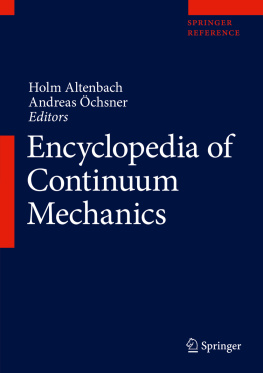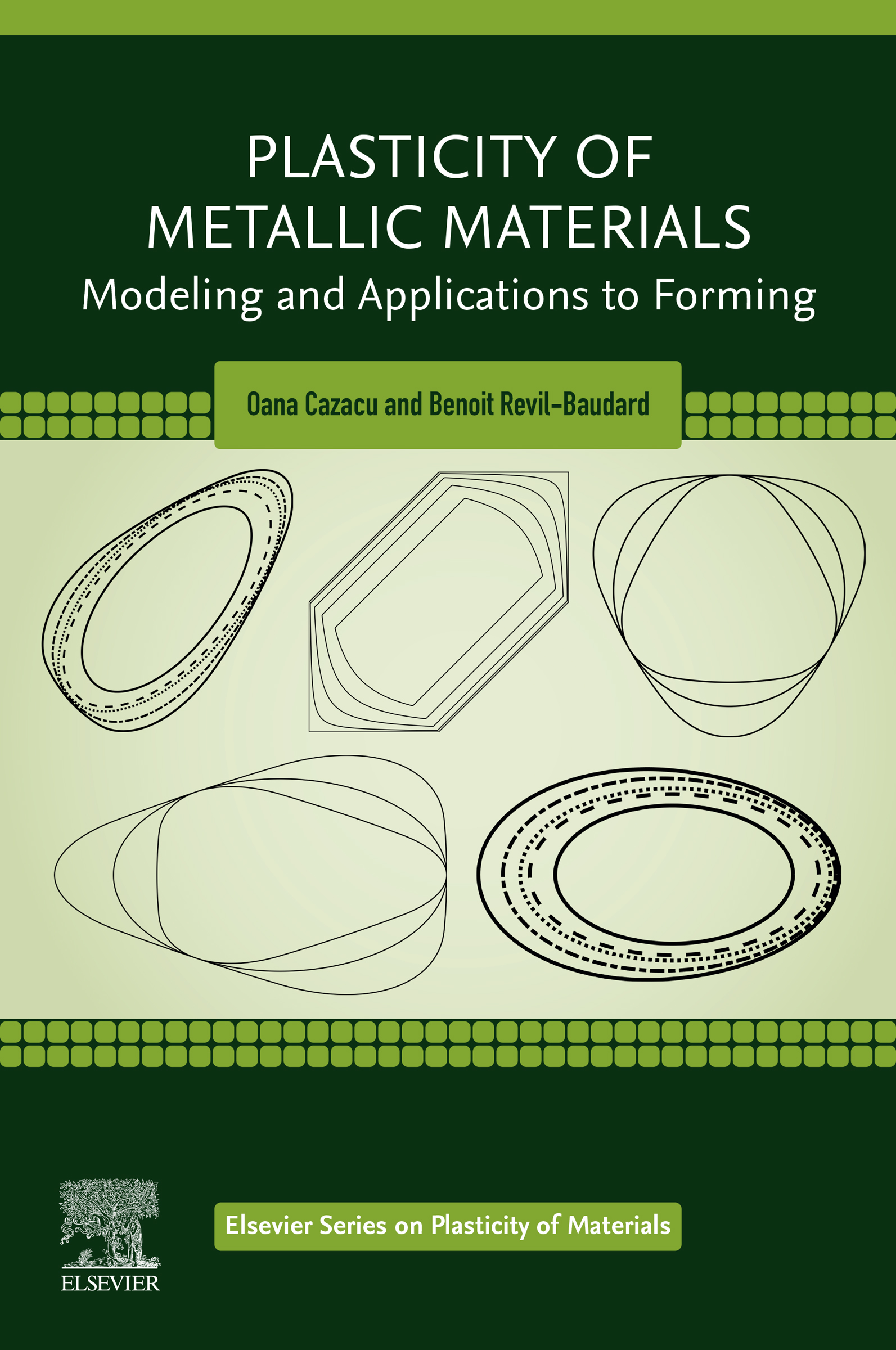Table of Contents
List of Figures
- Figures in 1
- Figures in 2
- Figures in 3
- Figures in 4
- Figures in 5
- Figures in 6
- Figures in 7
- Figures in 8
List of Tables
- Tables in 3
- Tables in 4
- Tables in 5
- Tables in 6
- Tables in 7
- Tables in 8
Landmarks
Plasticity of Metallic Materials
Modeling and Applications to Forming
Oana Cazacu
Benoit Revil-Baudard
Department of Mechanical and Aerospace Engineering, University of Florida/REEF
Table of Contents
Copyright
Elsevier
Radarweg 29, PO Box 211, 1000 AE Amsterdam, Netherlands
The Boulevard, Langford Lane, Kidlington, Oxford OX5 1GB, United Kingdom
50 Hampshire Street, 5th Floor, Cambridge, MA 02139, United States
Copyright 2021 Elsevier Inc. All rights reserved.
No part of this publication may be reproduced or transmitted in any form or by any means, electronic or mechanical, including photocopying, recording, or any information storage and retrieval system, without permission in writing from the publisher. Details on how to seek permission, further information about the Publishers permissions policies and our arrangements with organizations such as the Copyright Clearance Center and the Copyright Licensing Agency, can be found at our website: www.elsevier.com/permissions.
This book and the individual contributions contained in it are protected under copyright by the Publisher (other than as may be noted herein).
Notices
Knowledge and best practice in this field are constantly changing. As new research and experience broaden our understanding, changes in research methods, professional practices, or medical treatment may become necessary.
Practitioners and researchers must always rely on their own experience and knowledge in evaluating and using any information, methods, compounds, or experiments described herein. In using such information or methods they should be mindful of their own safety and the safety of others, including parties for whom they have a professional responsibility.
To the fullest extent of the law, neither the Publisher nor the authors, contributors, or editors, assume any liability for any injury and/or damage to persons or property as a matter of products liability, negligence or otherwise, or from any use or operation of any methods, products, instructions, or ideas contained in the material herein.
Library of Congress Cataloging-in-Publication Data
A catalog record for this book is available from the Library of Congress
British Library Cataloguing-in-Publication Data
A catalogue record for this book is available from the British Library
ISBN: 978-0-12-817984-0
For information on all Elsevier publications visit our website at https://www.elsevier.com/books-and-journals

Publisher: Matthew Deans
Acquisitions Editor: Dennis McGonagle
Editorial Project Manager: Joshua Mearns
Production Project Manager: Vijayaraj Purushothaman
Cover Designer: Matthew Limbert
Typeset by TNQ Technologies
Preface
While metalworking can be traced back thousands of years, the systematic characterization of the mechanical behavior of metals with the aim of understanding the conditions for occurrence of permanent or plastic deformation originates in the late 18th century with the work of Coulomb. Based on the experimental investigations of Tresca, the first mathematical theory of plasticity (i.e., complete set of differential equations governing elastic/plastic behavior) for isotropic materials was posed by Saint Venant and Lvy in the 1870s. It was not until the early 20th century that the general framework of the theory of plasticity was developed by von Mises and Prager; the fundamental postulates that ensure that the elastic/plastic problems are well posed being formulated only in the 1950s by Drucker.
Advances in the theory of plasticity of metallic materials and metal forming have been driven by the demand to improve performance and safety of structures and machine parts. While design changes can play a large role ultimately, significant progress requires the development of new lightweight and high-strength alloys. The last decade has seen renewed efforts and progress in both materials' development and formulation of mathematical models that could capture the unusual features of their behavior in the plastic regime.
This book presents a rigorous framework for description of plasticity phenomena, classic and recent models for isotropic and anisotropic materials, new original analytical solutions to elastic/plastic boundary value problems, and new interpretations of mechanical data based on these new models. Moreover, a detailed analysis of the predictive capabilities of various models to capture the plastic behavior during forming processes is provided for a variety of materials ranging for typical aluminum and steel alloys to hexagonal closed-packed (hcp) titanium materials.
This book has outgrown out of our research in the field and the challenges associated with the task of any modeler, which simply put consists in formulating a general plasticity theory in a five-dimensional space based on limited one-dimensional and at most two-dimensional data. Therefore, in writing this book we attempted to provide for each model a clear understanding of the hypotheses and simplifying assumptions on which is based, the range of applicability, predictive capabilities, and limitations. Furthermore, this book presents original contributions including new phenomena related to the plastic behavior of incompressible metals with tensioncompression asymmetry revealed through theoretical analysis along with results of systematic extensive numerical investigations conducted in order to verify/confirm these trends.
We begin with historical notes on the mathematical theory of plasticity. The emphasis is put on the methods and approaches that have led to advances in the field and culminated with the general concepts and constitutive hypotheses that are at the foundation of any elastic/plastic model. The remainder of is devoted to the presentation of numerical integration algorithms for solving elastic/plastic boundaryvalue problems using the finite-element method.
General three-dimensional criteria for description of the onset of plastic deformation for isotropic materials are presented in . For each yield criterion, we provide a detailed analysis of the yielding response for complex loadings. Moreover, for the classic higher-order yield criteria expressed in terms of the eigenvalues of the stress deviator, we present recently derived explicit expressions in terms of the invariants of the stress deviator. Besides the classic yield criteria, we discuss the most recent isotropic yield criteria for incompressible materials that display tensioncompression asymmetry. As an application, we present very recent contributions of the authors showing the significant influence of the yielding description on the size of the plastic zone that develops ahead of a crack.












